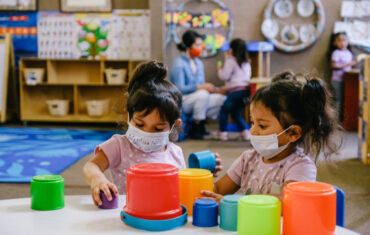As states reopen, governments and businesses are asking residents to wear face masks including fabric mask. Fabric mask helps you prevent from spreading the virus to others if you’re sick and don’t yet know it. Think of your fabric mask as part of the new social contract during this pandemic. Fabric mask also be considered in busy settings like public transport, workplaces, grocery stores or other crowded environments.
Good quality of fabric mask
Look for masks that have multiple layers, made from fabrics that are easy to wash and tightly woven. Better if the fabric has an antimicrobial or water repellent finish, especially for the outer layer. Cotton fabrics with a higher number of threads do a better job of filtering out microorganisms. Other studies show that fabrics such as natural silk and chiffon, while not as effective as cotton. However, they still offer better protection from particles than flannel or satin. It is also helpful if the mask has a pocket for a disposable filter.
Comfortable with fabric mask
Fabric masks should allow users to breathe easily and fit securely with ties or ear loops. The importance of a snug fit, not only limit the spread of potentially infectious respiratory droplets. It also prevent people from constantly readjusting their masks. These masks should be able to cover the entire nose and mouth comfortably without gaping or being too tight.
How to clean fabric mask
Cleaning fabric mask is crucial because it’s hard to know for sure whether a mask has come into contact with respiratory droplets containing COVID-19. You can place fabric mask in a washing machine and running a hot cycle to clean it. Or, CDC suggested for washing masks is to use a bleach solution. We can mix four teaspoons of household bleach with one litre of water. The organization recommends soaking the mask in the solution for five minutes and rinsing with cool water. It’s important to note that bleach is meant for disinfection. It should also not be used past its expiration date, nor should it be mixed with ammonia or any other cleanser.
Equally as important as washing your mask is drying it. You should make sure your mask dries completely after being washed, since damp cloth is a welcoming environment for mold to grow. It’s easiest to dry your mask in your dryer. But you can also hang your mask flat to dry in a space that receives direct sunlight. If you need to store your mask between uses during the day, consider carrying a disposable bag to put your fabric mask in.
Summary
Fabric mask should not be placed on young children under the age of 2; on anyone who has trouble breathing; or on anyone who is unconscious, incapacitated or otherwise unable to remove the cloth face covering without assistance, according to the CDC. We will be using the cloth masks for situations where a surgical or N95 mask would not be required. This extends the supply of our disposable surgical masks for those times when procedural care is required. While we are not out of our current supply of surgical masks we know getting new additional masks will be difficult because the national supply is running out. The fabric mask could be used over the surgical masks to keep them from getting soiled and extend their use.







1 thought on “Fabric Mask helps you prevent from virus”